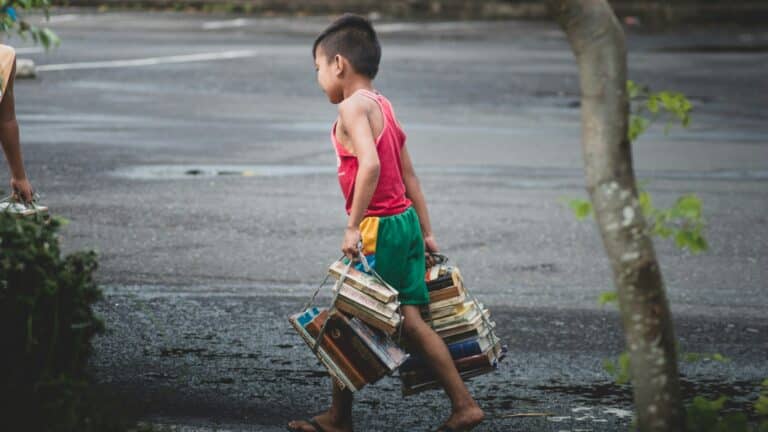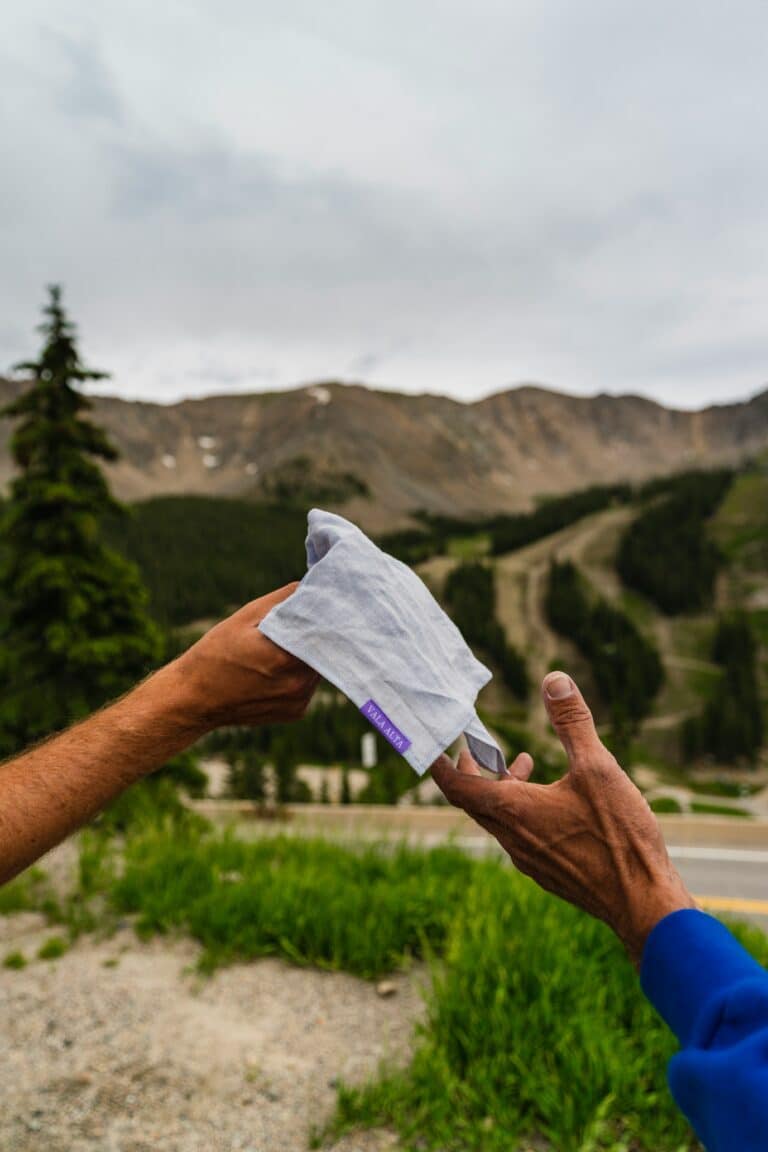In an era where climate change is a pressing reality, a more sustainable lifestyle becomes not only an ideal but a necessity. This article provides eco-saving strategies to parents, focusing on the top 10 low-waste kid essentials hacks, perfect for the budget-conscious who seek to reduce waste and save money. 🌍💰👧👦
Our children are the future, and it is our responsibility to teach them to respect and care for our planet. However, creating an eco-friendly lifestyle that’s kid-friendly and budget-friendly at the same time can seem like an impossible juggling act. I’m here to tell you: it’s not. With the right strategies, not only is it possible, but it’s easier than you might think. So, grab a cup of tea (or coffee if you prefer ☕), sit back, and let’s dive into the world of low-waste, budget-friendly, kid essentials.

Why should parents care about eco-saving strategies?
Before we dive into the practical hacks, let’s take a moment to understand why eco-saving strategies should be a priority for us, parents. These strategies are not only about reducing waste and saving money. They’re about creating a sustainable future for our children. Climate change, waste pollution, depletion of natural resources — these are realities our children will inherit. However, with mindful choices and a shift in our consumption habits, we can mitigate these issues and create a more sustainable future. It’s about the planet we leave for our children, and the habits we instill in them. 🌱🌳
What can parents expect from this article?
In this comprehensive guide, I’ve distilled years of experience, research, and advice from experts into top 10 practical, easy-to-implement hacks for creating a low-waste lifestyle for your children. Each of these hacks is designed to be easy on your budget, beneficial to the environment, and enjoyable for your children. From eco-friendly toys to waste-free lunches, from sustainable fashion choices to DIY craft ideas, we will cover a range of topics that will help you navigate the path to a greener, cleaner, budget-friendly lifestyle. 🧸🍎👕✂️
Join us on this eco-saving journey!
Parenting is a journey, and so is creating a sustainable lifestyle. This journey isn’t about perfection, but about making better choices whenever we can. Together, we can make a difference. I invite you to join us on this exciting journey towards a more eco-friendly, budget-friendly, and child-friendly lifestyle. So, are you ready to discover top 10 low-waste kid essentials hacks? Let’s get started! 🚀
Embracing the Low-Waste Lifestyle: Eco-Saving Strategies for Budget-Conscious Parents
As we stand at the precipice of an environmental crisis, it’s become increasingly important for us to shift our habits to more sustainable alternatives. A significant part of this involves minimizing waste and adopting eco-friendly practices. Fortunately, this lifestyle change can also be a boon for budget-conscious parents looking to save money. In this article, we explore ten low-waste kid essentials and hacks that will not only reduce waste but also help parents save some hard-earned dollars.
The key to adopting a low-waste lifestyle is to start small. Begin with one or two changes, and gradually integrate more into your life as you become comfortable. Remember, it’s not about perfection but progress. So let’s dive in and explore how we can make some eco-friendly swaps in our children’s daily essentials.
But before we proceed, I recommend watching this video titled “Eco-Friendly Parenting: Low-Waste Living on a Budget” by the Green Mum on YouTube. It offers a wealth of knowledge on the subject and practical tips to start your low-waste journey.
1. Switch to Reusable Diapers
Diapers are perhaps one of the most significant sources of waste in households with infants. The average child goes through approximately 5,000 disposable diapers before they’re potty trained, which ends up in landfills and takes hundreds of years to decompose. A fantastic alternative to this are reusable cloth diapers.
Not only are reusable diapers better for the environment, but they’re also more cost-effective in the long run. Despite the higher upfront cost, cloth diapers can save you thousands of dollars over the course of your child’s infancy. To illustrate, let’s look at the following comparative table:
| Type of Diaper | Cost per Diaper | Total Cost (for 5,000 diapers) |
|---|---|---|
| Disposable Diapers | $0.20 – $0.30 | $1,000 – $1,500 |
| Cloth Diapers | $2 – $5 | $300 – $500 (15-20 diapers that are washed and reused) |
By switching to reusable diapers, you can save up to $1,000 while also reducing your contribution to landfill waste significantly.
2. Invest in Quality, Versatile Clothing
Kids outgrow clothes at an astonishing rate, and parents often find themselves buying new ones every few months. This not only contributes to waste but also puts a strain on your budget. To combat this, consider investing in high-quality, versatile clothing that can last longer and be adapted as your child grows.
Brands like ‘Jackalo’ specialize in clothes that are designed to grow with your child. They offer “grow-with-me” pants that can be extended in length as your child grows taller. Additionally, look for clothes made from durable materials that can withstand the rough and tumble of children’s play. Buying less but better quality can save you money in the long run and reduce waste.
For more inspiration on versatile children’s clothing, check out the video “Eco-Friendly Kids Clothes: Quality over Quantity” by the channel My Green Closet on YouTube.
3. Choose Second-Hand and Hand-Me-Downs
Second-hand shopping is a fantastic way to save money and reduce waste. Kids often outgrow their clothes, toys, and books before they’re worn out, which means you can find high-quality items for a fraction of the price in thrift stores or online marketplaces.
Hand-me-downs are another excellent option. If you have friends or family with older children, they may have items they no longer need. Not only will you be saving money, but you’ll also be keeping perfectly good items out of the landfill. Plus, children rarely notice or care if their clothes or toys are new or second-hand.
In the table below, let’s take a look at the potential savings you can achieve with second-hand shopping:
| Item | New Price | Second-Hand Price | Savings |
|---|---|---|---|
| Kids’ Clothes | $20 – $50 per item | $5 – $10 per item | $15 – $40 per item |
| Toys | $10 – $100 per toy | $2 – $20 per toy | $8 – $80 per toy |
| Books | $5 – $20 per book | $1 – $5 per book | $4 – $15 per book |
As shown, opting for second-hand items can significantly reduce your expenditure while being a more sustainable choice.
4. Opt for Sustainable School Supplies
From notebooks to lunch boxes, school supplies can generate a significant amount of waste. Fortunately, there are several sustainable alternatives available. Choose pencils over plastic pens, opt for refillable markers, and look for notebooks made from recycled paper. For lunch boxes, choose stainless steel or bamboo options over plastic.
While the initial cost of these items might be higher, they tend to last longer, saving you money in the long term. Plus, they’re better for the environment. Consider it an investment in both your child’s future and the planet they inhabit.
For more tips on sustainable school supplies, check out the video “Sustainable Back to School Supplies” by eco-activist Shelbizleee on YouTube.
5. Say Goodbye to Disposable Wipes
Like diapers, disposable wipes contribute significantly to landfill waste. They’re also costly in the long run. A more sustainable and budget-friendly alternative is reusable cloth wipes. You can purchase them online, or even make your own from old t-shirts or towels.
Cloth wipes can be used for everything from diaper changes to cleaning up after meals. Simply wash them with your regular laundry to reuse. By making this switch, you can save up to $200 per year and significantly reduce your household waste.
For a DIY cloth wipes tutorial, watch the video “DIY Reusable Baby Wipes & Solution” by Naturally Brittany on YouTube.
6. Embrace the Art of Repair
From torn clothes to broken toys, don’t be quick to throw away items that could be fixed. Learning basic repair skills can save you a significant amount of money over time and also instill valuable lessons of sustainability and resourcefulness in your children. Not to mention, it’s an excellent way to reduce waste.
Repair doesn’t always have to be complicated. Even simple things like sewing a button or gluing a toy back together can make a big difference. For more complex repairs, there are plenty of tutorials online to guide you.
For easy-to-follow repair tutorials, check out the YouTube channel “Dad, how do I?” This channel offers practical advice on various repairs and other “dadvice” for everyday tasks.
7. Grow Your Own Food
Starting a vegetable garden might seem like a daunting task, but it’s a fantastic way to save money and reduce waste. Even if you don’t have a lot of space, many vegetables can be grown in pots or vertical gardens. Plus, gardening can be a fun and educational activity for your children.
By growing your own food, you’ll be able to reduce your grocery bills and cut down on the plastic packaging that comes with store-bought produce. You’ll also be sure of where your food comes from and how it’s grown.
To get started with your own vegetable garden, watch the video “Easy-to-Grow Vegetables for Beginners” by the Rusted Garden on YouTube.
8. Ditch the Disposable Tableware
Disposable plates, cups, and cutlery might be convenient for kids’ parties or picnics, but they create a ton of waste and can add up in cost over time. Instead, opt for reusable alternatives like bamboo or stainless steel. These materials are durable and long-lasting, making them perfect for children.
For a fun and sustainable twist, you can even let your children pick out their own reusable tableware in their favorite colors or with their favorite characters. They’ll be more likely to take care of them and less likely to lose them.
To discover more about the benefits of reusable tableware, check out the video “The Truth About Disposable Plasticware” by Seeker on YouTube.
9. Invest in Wooden Toys
Plastic toys not only contribute to landfill waste but also often come with a shorter lifespan as they’re prone to breaking. A better alternative is wooden toys. They are typically more durable and can withstand the rough play of children, meaning they’ll last longer and save you money in the long run.
Wooden toys are also a more eco-friendly choice. They’re biodegradable and often come from sustainable sources. Plus, they’re safe for children as they don’t contain any harmful chemicals often found in plastic toys.
For a closer look at the benefits of wooden toys, watch the video “Why Choose Wooden Toys for Children” by the channel Best Years Ltd on YouTube.
10. Make Your Own Snacks
Pre-packaged snacks are convenient, but they can be expensive and generate a lot of waste. Making your own snacks is a fantastic way to save money and reduce waste. From homemade granola bars to fruit leather, there are countless kid-friendly recipes available online.
Homemade snacks also allow you to control what goes into your child’s food, helping them eat healthier. Plus, cooking together can be a great bonding experience for you and your children.
For kid-friendly snack recipes, check out the video “Healthy Snacks for Kids” by Tasty on YouTube. Happy cooking!
Final Words
Adopting a low-waste lifestyle doesn’t have to be daunting or expensive. By making small changes, like the ones we’ve discussed, you can save money and reduce your family’s environmental impact. Remember, every little bit helps, and even the smallest changes can make a big difference over time.
So why not give these low-waste kid essentials and hacks a try? Not only will you be doing your part in preserving the planet for future generations, but you’ll also be teaching your children valuable lessons about sustainability and frugality. And who knows, you might even have some fun along the way!
Conclusion
In the course of this extensive article, we have traversed through numerous areas of significance pertaining to the field of IT and software engineering. A thorough comprehension of these subjects is integral to not just budding professionals in the industry, but to seasoned veterans as well, as it provides a comprehensive insight into the foundational aspects and emerging trends of the discipline.
Starting with the basics, we explored the fundamental structure of a software system, diving deep into the multiple layers that make up a typical software architecture, from user interfaces to business logic and data storage. We also underscored the importance of good software design principles, and how they can significantly enhance the functionality, maintainability, and efficiency of a software system.
Moving on, we analyzed the key concepts of software development methodologies, particularly the Agile and Waterfall models. We weighed their advantages and disadvantages, and how to choose the most fitting approach based on specific project requirements and team dynamics.
We also tackled the subject of cybersecurity, an ever-growing concern in today’s digital age. Understanding how to safeguard software systems against potential threats and vulnerabilities, and ensuring data privacy and integrity are paramount to every IT professional.
Our discussion then steered towards emerging technologies like artificial intelligence (AI) and machine learning (ML). As we learned, these technologies have transformative potential across a broad spectrum of industries and applications, and any professional in the field should be equipped with a basic understanding of their principles and potential.
Finally, we wrapped up with a detailed review of software testing strategies. From unit testing to integration and system testing, we underscored the crucial role of rigorous testing in ensuring the reliability and robustness of a software system.
But knowledge acquisition is a never-ending journey. As we continually evolve and innovate in the field of IT and software engineering, staying updated and acquiring new skills should be an ongoing commitment. Check out resources like TechRepublic, StackOverflow, and GitHub for more insights and learning opportunities.
This article barely scratches the surface of the vast and complex world of software engineering. I encourage you to delve deeper, ask questions, share your insights, and apply what you’ve learned in your day-to-day work. After all, the beauty of knowledge lies in its application and sharing. 😉
Remember, every piece of software started as an idea in someone’s mind. Today, that idea could be yours. So, keep innovating, keep creating, and most importantly, keep learning. The future of IT and software engineering is in your hands. 👩💻👨💻
As always, your feedback and comments are greatly appreciated. Feel free to drop a line in the comments section below. And don’t forget to share this article with your fellow professionals. Sharing knowledge only makes us stronger!💪
References:
TechRepublic
StackOverflow
GitHub



